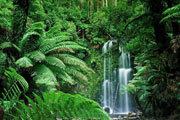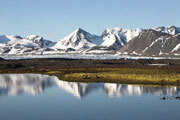June 5, was World Environment Day, and that year's theme was Deserts and Desertification: Don't Desert Drylands! In honor of this day, check out why the world's deserts are such an important part of our earth!
The Desert - What Makes This Biome Unique?
Deserts are areas that have hardly any rain, are extremely dry and are usually very hot. Animals and plants have adapted to the harsh environment so they can survive the extreme conditions. There are four types of deserts in the world. Read on to find out what they are!
The Desert - Hot and Dry Regions
North America has four major hot and dry deserts: Chihuahuan, Sonoran, Mojave and the Great Basin. The soil is coarse and rocky (like gravel) and drains well, which means the soil is very dry. The finer sand and dust is blown away so only heavier rocks and dirt are left behind. The plants found here are all small, thick shrubs and short trees. Temperatures in a hot and dry desert average about 20-25 degrees Celsius, but can reach as high as 50 degrees Celsius! The largest desert in the world is a hot and dry desert called the Sahara. The Sahara covers most of the northern African continent.
The Desert - Semiarid Regions
Major semiarid deserts include the sagebrush regions of Utah, Montana. There are also semiarid deserts in Greenland, Russia, Europe and northern Asia. The soil is sandy and fine but also has loose pieces of rock and it can be gravelly. There isn't a lot of water, however, there are lots of spiny plants that provide shade.
- For more cool desert info click here.
Related Stories:
- Aquatic Biomes of the World
- Forest Biomes of the World
- Grasslands Biomes of the World
- Tundra Biomes of the World
- More Cool Places...

































